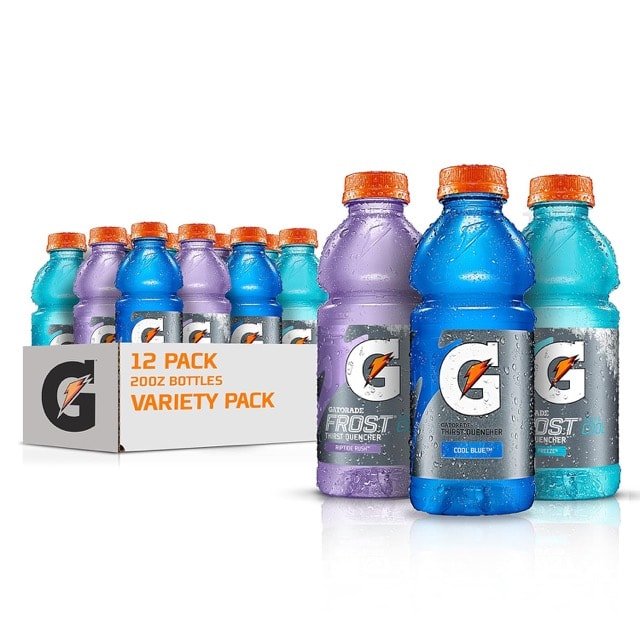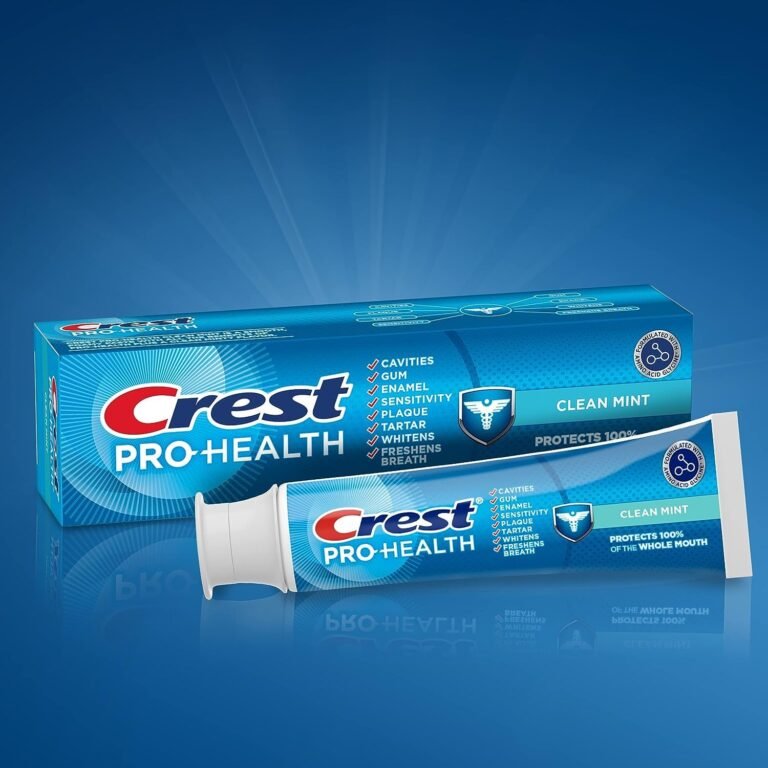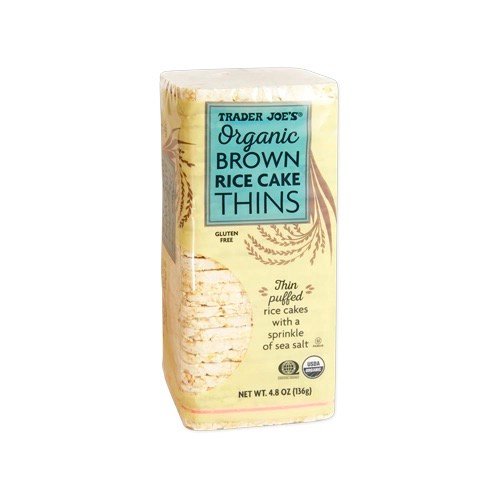Understanding Gatorade Ingredients: What’s Inside the Sports Drink?
We need to know the ingredients we are putting into our bodies. Gatorade is the most popular sports drink in the world. This post is about understanding the Gatorade ingredients your body consumes. Check our citations, these are doctor-led studies and research.

Main Ingredients and Nutrition

Gatorade is a popular sports drink designed to replenish fluids and electrolytes lost during physical activity. Here’s a comprehensive list of ingredients typically found in Gatorade Thirst Quencher:
1. Water: The primary ingredient, providing hydration.
2. Sugar: A source of quick energy for athletes.
3. Dextrose: Another form of added sugar, also provides fuel.
4. Citric Acid: Added for flavoring and as a preservative.
5. Natural Flavor: Enhances taste without artificial additives.
6. Salt (Sodium Chloride): Replenishes electrolytes lost through sweat.
7. Sodium Citrate: Helps regulate acidity and enhances flavor.
8. Monopotassium Phosphate: A source of potassium and phosphate electrolytes.
Additional Ingredients

9. Gum Arabic: Used as a stabilizer and emulsifier.
10. Sucrose Acetate Isobutyrate: A replacement for brominated vegetable oil, acting as a stabilizer.
11. Glycerol Ester of Rosin: Another stabilizer to help maintain the drink’s consistency.
Coloring Agents
Depending on the flavor, Gatorade may contain various food colorings. For example:
Yellow 6 Food Coloring

Based on the search results provided, here’s a summary of the research on artificial Yellow 6 coloring:
Health Concerns
Several studies have raised potential health concerns associated with Yellow 6:
1. Cancer risk: Yellow 6 has been found to contain benzidine, a known carcinogen[3]. Industry-sponsored animal tests indicated that Yellow 6 causes tumors of the adrenal gland and kidney[1].
2. Allergic reactions: Yellow 6 may cause occasional, but sometimes severe, hypersensitivity reactions[1][3].
3. Organ toxicity: In large amounts, Yellow 6 has the potential for organ toxicity, respiratory tract irritation, skin irritation, and eye irritation or damage[3].
4. Endocrine disruption: Yellow 6 is classified as a xenoestrogen, an estrogen-mimicking compound and endocrine-disrupting chemical. The European Food Safety Authority suggests that it can potentially negatively affect testicular health in men[3].
5. Neurotoxicity: Studies have found that Yellow 6 and other food dyes may contain neurotoxic chemicals potentially linked to attention deficit, mental health problems, and behavioral issues in children[3].
6. Developmental and reproductive toxicity: Animal studies suggest that Yellow 6 might increase the risk of testicular and adrenal tumors in rats[3].
Regulatory Status and Safety Limits
Despite these concerns, Yellow 6 is approved for use in many countries:
1. FDA approval: The U.S. Food and Drug Administration (FDA) has approved Yellow 6 for use in foods, drugs, and cosmetics[3].
2. European approval: The European Food Safety Authority (EFSA) has also approved Yellow 6 [3].
3. Acceptable Daily Intake (ADI): While not explicitly stated in the search results, regulatory bodies typically establish ADIs for approved food additives.
Other Considerations
1. Prevalence: Yellow 6 is the third-most widely used food dye in the United States[1].
2. Contamination: Yellow 6 may be contaminated with small amounts of several carcinogens, such as 4-aminobiphenyl and benzidine[1].
3. FDA review: The FDA reviewed the data on Yellow 6 and concluded that it does not pose a significant cancer risk to humans[1].
4. Detection methods: Various scientific techniques, including spectrophotometric methods, UV-Vis spectrometry, and mass spectrometry, can detect and quantify Yellow 6 in foods [3].
Ongoing Research and Recommendations
While Yellow 6 is currently approved for use, ongoing research continues to investigate its potential health effects. Some health professionals and organizations recommend limiting or avoiding synthetic food dyes, including Yellow 6, due to these potential concerns:
1. The Center for Science in the Public Interest reports that Yellow 6 adds unnecessary risk to the food supply due to its cancer-causing contaminants[3].
2. Some researchers, based on animal studies, voice concerns about potentially adverse neurodevelopmental and behavioral effects of food dyes in children [3].
3. The Environmental Working Group classifies Yellow 6 as possibly toxic to reproduction and development, based on animal studies showing adverse effects at high doses[3].
It’s important to note that while some studies have found associations between Yellow 6 and various health issues, more research is needed to establish definitive causal relationships. Consumers concerned about Yellow 6 can check food labels to identify and avoid products containing this dye.
Citations:
[1] https://www.cspinet.org/cspi-news/synthetic-food-dyes-rainbow-risks
[2] https://academic.oup.com/carcin/article/45/10/711/7731602?login=false
[3] https://www.rupahealth.com/post/yellow-6-understanding-its-applications-and-potential-health-impacts
Blue 1 Food Coloring

A summary of the research on artificial Blue 1 coloring:
Health Concerns
Several studies have raised potential health concerns associated with Blue 1 (also known as Brilliant Blue FCF or FD&C Blue No. 1):
1. Developmental effects: Some animal studies have observed developmental delays and behavioral difficulties associated with Blue 1 consumption[2]. Another study found potential developmental effects on the nervous system[2].
2. Neurotoxicity: Research from 2010 suggested that Blue 1 may inhibit neurite growth and cause neurotoxicity, potentially altering the nervous system. This particularly concerns infants whose blood-brain barriers are not fully developed.
3. Cancer risk: A study observed a correlation between Blue 1 and kidney tumors in mice, raising questions about its potential carcinogenic effects.
4. Platelet aggregation: High Blue 1 (1 mM) concentrations affected platelet aggregation by blocking Panx1 channels[3]. However, this effect was not observed at lower concentrations (100 μM)[3].
Regulatory Status and Safety Limits
Despite these concerns, Blue 1 is approved for use in many countries:
1. FDA approval: Blue 1 is one of the oldest FDA-approved color additives and is generally considered nontoxic and safe[3].
2. EU regulations: The European Union has set legal limits for Blue 1 (E133) at 150–300 mg/kg, depending on the type of food[3].
3. Acceptable daily intake: The safety limit for foods and drugs is 0.1 mg/day per kg body weight, with an acceptable daily intake of 6 mg/kg[3].
Other Considerations
1. Asthma: A 1979 clinical trial found that Blue 1 did not affect pulmonary function in 42 out of 43 patients with perennial asthma, suggesting it is unlikely to cause allergic reactions in individuals with pre-existing moderate asthma[3].
2. Enteral feeding: In 2003, the FDA issued a public health advisory warning healthcare providers about the potential toxicity of Blue 1 in enteral feeding solutions[3].
3. Prevalence: Blue 1 is one of the more common blue dyes in the United States, found in various products, including foods, medications, and cosmetics[3].
While Blue 1 is currently approved for use in many countries, ongoing research continues to investigate its potential health effects. Due to these potential concerns, some health professionals and organizations recommend limiting or avoiding synthetic food dyes, including Blue 1 [1][2].
Citations for Research on Blue 1:
[1] https://www.rupahealth.com/post/blue-1-dye-everything-you-need-to-know-about-this-food-coloring
[2] https://www.ewg.org/news-insights/news/2024/03/what-food-dye
Red 40 Food Coloring:

Based on the search results provided, here’s a summary of the research on artificial Red 40 coloring:
Health Concerns
Several studies have raised potential health concerns associated with Red 40:
1. Hyperactivity and ADHD: Some research suggests a link between Red 40 and increased hyperactivity, particularly in children with ADHD[1][2]. However, the evidence is mixed and inconclusive[4].
2. DNA damage: A 2023 study found that Red 40 can cause DNA damage both in vitro and in vivo[3].
3. Colonic inflammation: The same study showed that consuming Red 40 with a high-fat diet led to dysbiosis and low-grade colonic inflammation in mice[3].
4. Inflammatory Bowel Disease (IBD): Recent research indicates that Red 40 may trigger or exacerbate experimental colitis in animal models[3][5].
5. Allergic reactions: Some individuals may experience allergic reactions to Red 40, though these tend to be rare and mild[7].
Regulatory Status and Safety Limits
Despite these concerns, Red 40 is approved for use in many countries:
1. FDA approval: The FDA has approved Red 40 and considers it safe within established limits[7].
2. Acceptable Daily Intake (ADI): The ADI for Red 40 is 7 mg/kg of body weight per day[7].
3. Consumption levels: Studies show that average daily intake in the US is well below the ADI, ranging from 0.1 to 0.5 mg/kg of body weight[7].
Other Considerations
1. Long-term effects: There is growing concern about the long-term health implications of regular consumption of Red 40, as initial safety assessments focused primarily on acute toxicity[6].
2. Environmental impact: The production and disposal of synthetic food dyes like Red 40 may have environmental consequences[4].
3. Prevalence: Red 40 is one of the most commonly used food dyes in the United States, found in various products including foods, medications, and cosmetics[6][7].
Ongoing Research
While Red 40 is currently approved for use in many countries, ongoing research continues to investigate its potential health effects. Due to these potential concerns, some health professionals and organizations recommend limiting or avoiding synthetic food dyes, including Red 40 [2][6].
It’s important to note that while some studies have found associations between Red 40 and various health issues, more research is needed to establish definitive causal relationships. Individuals concerned about Red 40 can check food labels to identify and avoid products containing this dye[4][7].
Citations for Research on Red 40:
[1] https://www.medicalnewstoday.com/articles/red-dye-40-adhd
[2] https://www.amenclinics.com/blog/brain-health-guide-red-dye-40/
[4] https://www.integrative-psych.org/resources/the-impact-of-red-dye-40-or-allura-red-ac
[6] https://academic.oup.com/carcin/article/45/10/711/7731602?login=false
It’s worth noting that the exact ingredient list may vary slightly depending on Gatorade’s specific flavor and product line. The original Gatorade Thirst Quencher is based on water, salt, and sugar, with added flavoring and coloring. Some variations, such as the G2 line, may include different sweeteners like PureVia (stevia extract) to reduce calorie content.
Gatorade no longer uses high fructose corn syrup or brominated vegetable oil in its formulations, replacing these ingredients with sucrose-dextrose combinations and sucrose acetate isobutyrate.
Comparison with Other Sports Drinks
When it comes to sports drinks there are many options out there. Here’s a comparison of Gatorade with other popular sports drinks:
Gatorade Thirst Quencher is known for quick rehydration due to its balanced mix of carbs and electrolytes like sodium and potassium. But it has a lot of added sugar, 34g per 20oz bottle which is more than some of its competitors. For example Powerade another popular sports drink has 21g of sugar per 20oz serving so it’s a slightly lower sugar option.
In terms of electrolytes Gatorade and Powerade are similar but Gatorade has more flavors like fruit punch and cool blue which can be more appealing to some consumers. Gatorade uses modified food starch and artificial flavors to enhance taste and texture while some other brands use different additives.
Another competitor BodyArmor markets itself as a more natural option. It uses coconut water as a base and has no artificial flavors or colors. It also has more potassium which can help with muscle function and recovery.
In the end it’s all about personal preference and your nutritional needs. Gatorade is good for quick rehydration and flavor options but be aware of the high sugar and artificial ingredients. Always check the nutrition facts and ingredient labels to make an informed decision that fits your health goals.
Health Concerns and Criticisms
High sugar intake: linked to various health problems, including obesity and tooth decay
Artificial ingredients: some critics argue that artificial flavors and preservatives can be harmful to health
Lack of essential nutrients: Gatorade has been criticized for not providing enough essential nutrients, such as vitamin C
Conclusion
Gatorade is a popular sports drink designed for rapid rehydration
Contains a mix of carbohydrates, electrolytes, and additives
High sugar content and artificial ingredients have raised health concerns
Important to check nutrition facts and labeling to make informed choices.
Learn more about being healthy at FittBeat.com.






